During our summer holidays in Camp Rogač near Slano, we made a nice day trip to the island of Korčula. It was easy to get there: the scenic drive through the quaint and tranquil landscape of Pelješac peninsula (around 65 km long) offered beautiful views of typical vineyards, natural bays, dense forests and picturesque Dalmatian villages. But Pelješac is particularly famous for its excellent sorts of wine. There are plenty of opportunities to make a stop at one of the private wineries along the road and taste the famous Plavac or Dingač.
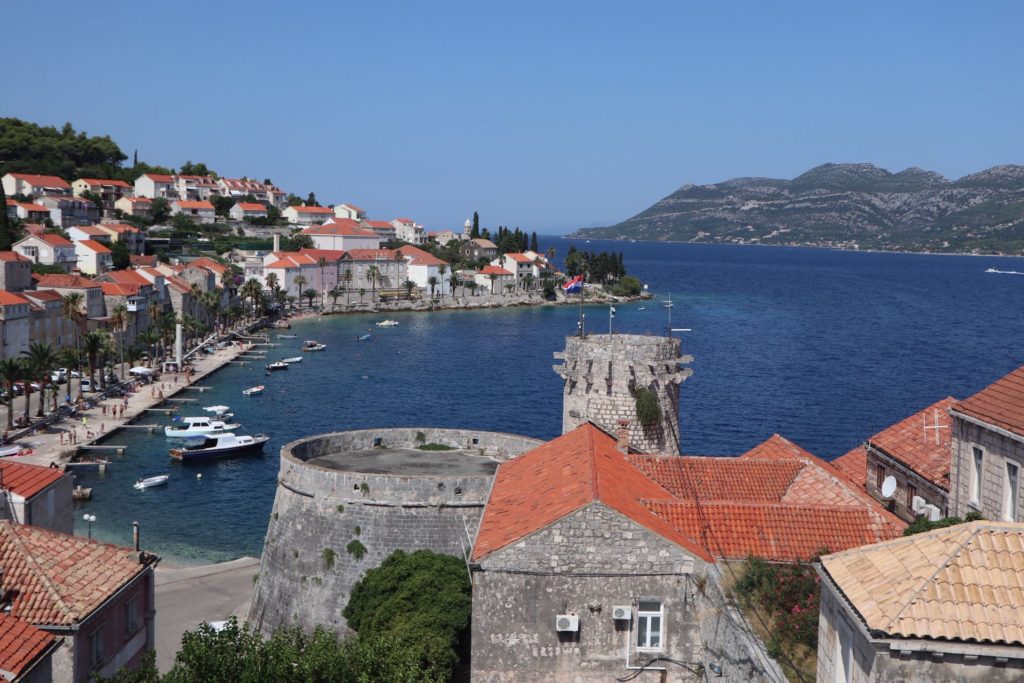 The drive ended in Orebić, where we parked our car. Far away, we could see the fortified town of Korčula, situated on the protected east coast of the island. Orebić is a nice tourist resort, situated at the foot of the barren mountain of St Ilija (996 m.). It was crowdy. Many tourists visit this place, but it is also the starting point for ferries to Korčula. We took the low-priced pedestrian ferry (departures each hour) and within 15 minutes we reached the old town of Korčula.
The drive ended in Orebić, where we parked our car. Far away, we could see the fortified town of Korčula, situated on the protected east coast of the island. Orebić is a nice tourist resort, situated at the foot of the barren mountain of St Ilija (996 m.). It was crowdy. Many tourists visit this place, but it is also the starting point for ferries to Korčula. We took the low-priced pedestrian ferry (departures each hour) and within 15 minutes we reached the old town of Korčula.
I think that Korčula Old Town with its cluster of terracotta roofs is one of the most beautiful medieval towns in Dalmatia. The round towers and thick stone walls look striking from the sea. They were built in the 14th century for defense against passing-by enemies. Originally, there were 12 towers and the walls were up to 20m high. No need to say that Korčula has a long and turbulent history, as it was once a vital part of the Venetian empire. And … don’t forget that Marco Polo (1254-1324), the famous Venetian merchant and world-traveler, was allegedly born here.
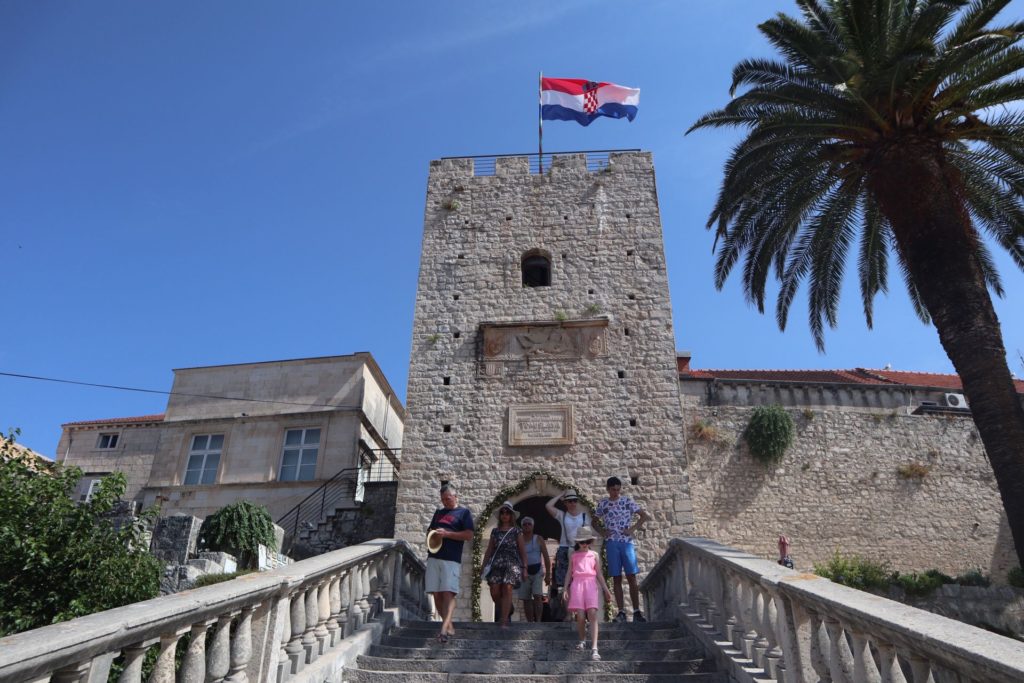 We entered the town through the Sea Gate or Porta Maris, decorated by a double stone stairway with a beautiful balustrade and a small fountain in the form of a frog. The main gate or Land Gate is located on the other side of the town, within the Veliki Revelin Tower, which was built in the 14th century.
We entered the town through the Sea Gate or Porta Maris, decorated by a double stone stairway with a beautiful balustrade and a small fountain in the form of a frog. The main gate or Land Gate is located on the other side of the town, within the Veliki Revelin Tower, which was built in the 14th century.
Although it was a hot day, it was quite cool and breezy in the old town. I was surprised to hear the reason: the main street runs north to south and the 26 narrow cobbled side streets are arranged in a herringbone pattern allowing free circulation of air, but protecting against strong winds!
We found the main tourist attractions on the central square. Especially the 15th-century Cathedral of St. Mark was impressive, with intriguing sculptures on the façade around the entrance. It was built from Korčula limestone in a Gothic-Renaissance style by Italian and local artisans.
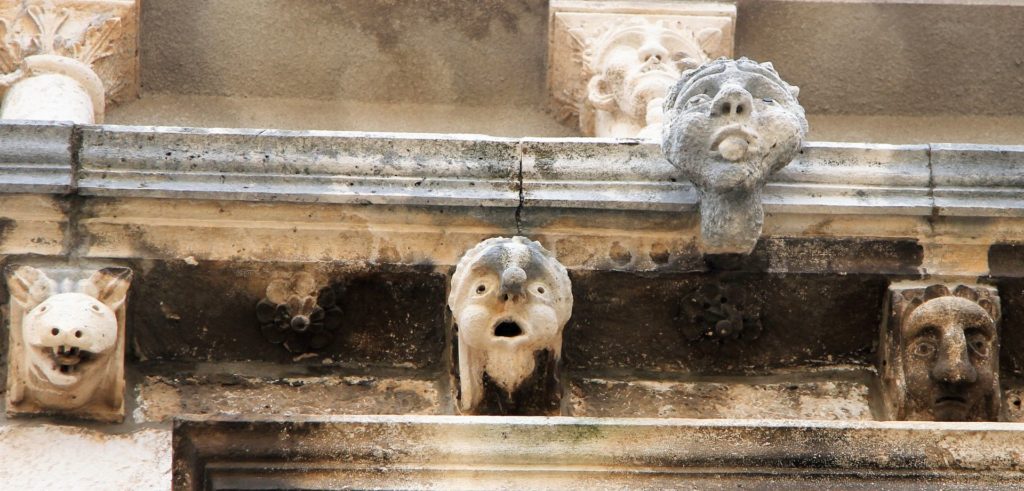 Unbothered by tourist crowds, we explored the picturesque alleys. It was nice to stumble across weird architectural details on the old buildings, which often reminded us of the Venetian past.
Unbothered by tourist crowds, we explored the picturesque alleys. It was nice to stumble across weird architectural details on the old buildings, which often reminded us of the Venetian past.
The Revelin Tower could be visited and offered a great view of the red roofs, the cathedral tower and the surroundings.
It was time for lunch. Enjoying the laid-back Mediterranean atmosphere, we made a walk around the town, along numerous cozy restaurants and pubs with outdoor terraces above the transparent blue sea. Huge pine trees and palms offered shade and coolness. And the seafood was perfect!
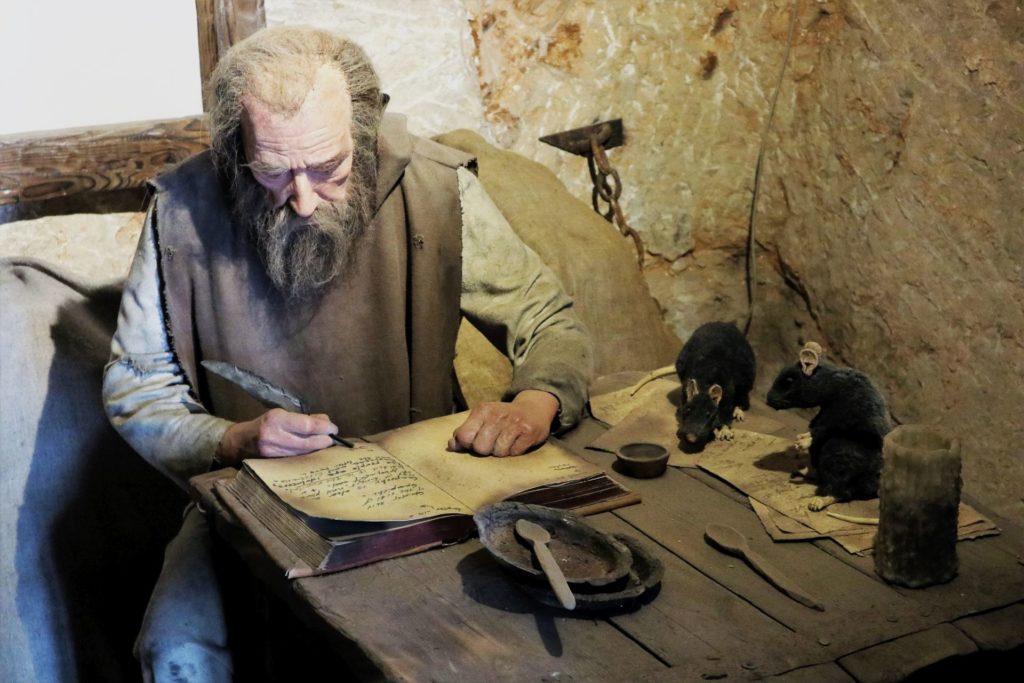 But there was another place we intended to visit. Although Marco Polo’s supposed house of birth was under reconstruction, we wanted to discover more about his adventures. At a five minutes’ walk from the Veliki Revelin Tower we found a modern multi-media attraction, i.e. museum that retraces the travels of Marco Polo by seven waxwork tableaux illustrating scenes of his life. The entrance fee is rather expensive (60 kunas), but you can get a free headphone audio guide, available in many different languages. We found it fascinating! By the way, it is interesting to know that Chinese visitors are admitted free of charge…
But there was another place we intended to visit. Although Marco Polo’s supposed house of birth was under reconstruction, we wanted to discover more about his adventures. At a five minutes’ walk from the Veliki Revelin Tower we found a modern multi-media attraction, i.e. museum that retraces the travels of Marco Polo by seven waxwork tableaux illustrating scenes of his life. The entrance fee is rather expensive (60 kunas), but you can get a free headphone audio guide, available in many different languages. We found it fascinating! By the way, it is interesting to know that Chinese visitors are admitted free of charge…
It was time to get back to the ferry after a fantastic day trip. Korčula is a true gem of Dalmatia and also a paradise for photographers!
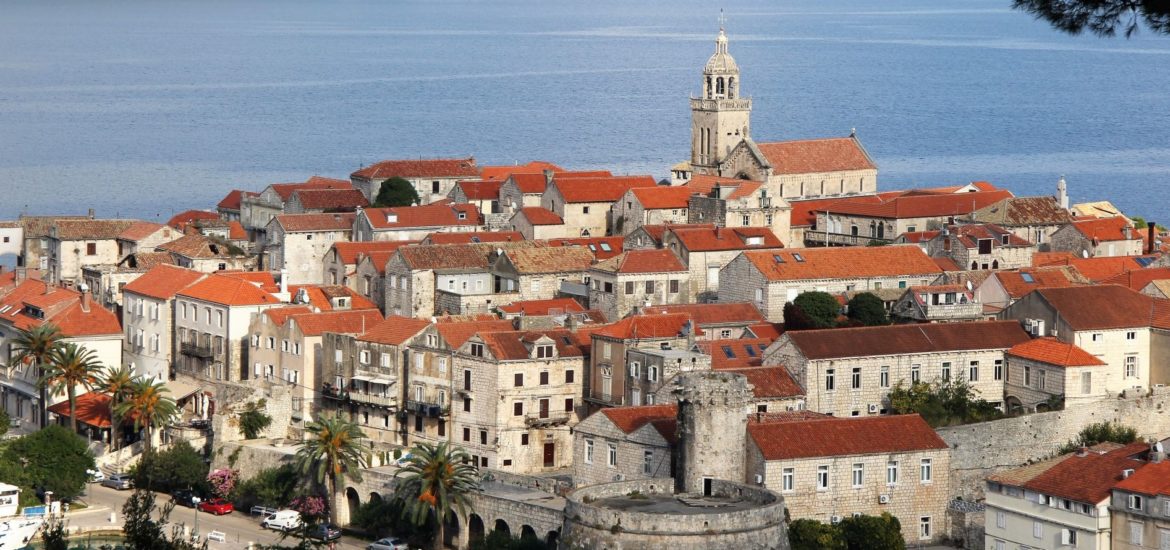
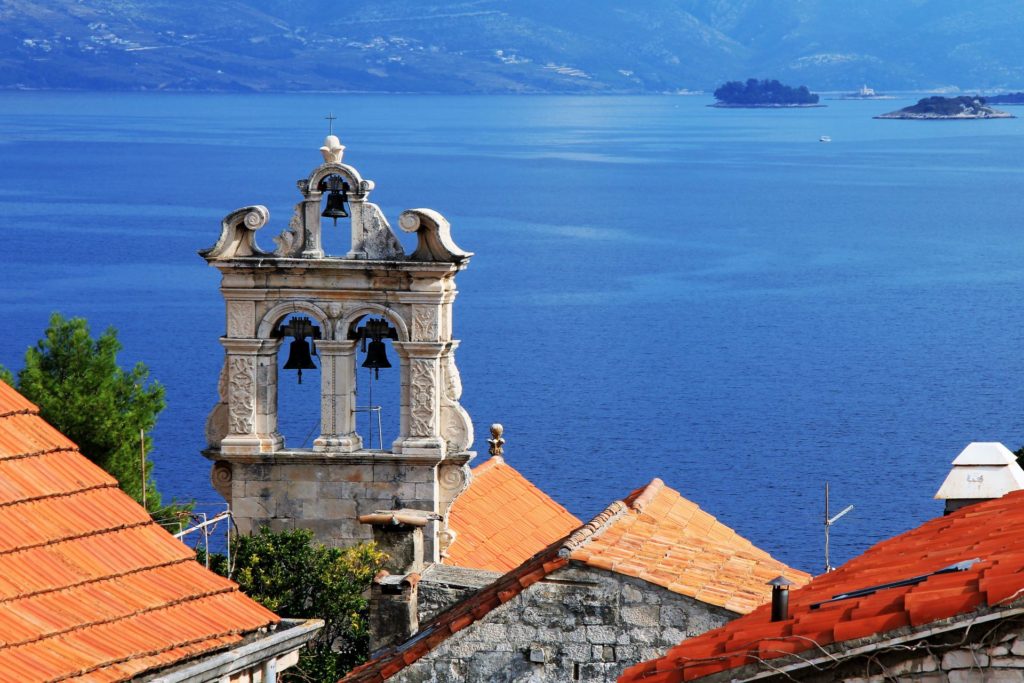
We were restricted on time during our trip and chose Korcula as the island that we’d travel to, over the likes of Hvar. I think we made the best choice for us, and in September didn’t have as many tourists as I thought (most got off at Hvar, as I had read before). Now, this is 4 years ago, so I don’t know if the Croatian boom has changed the numbers or not.
We visited Korcula mid August and I can assure you: it is not too crowdy!